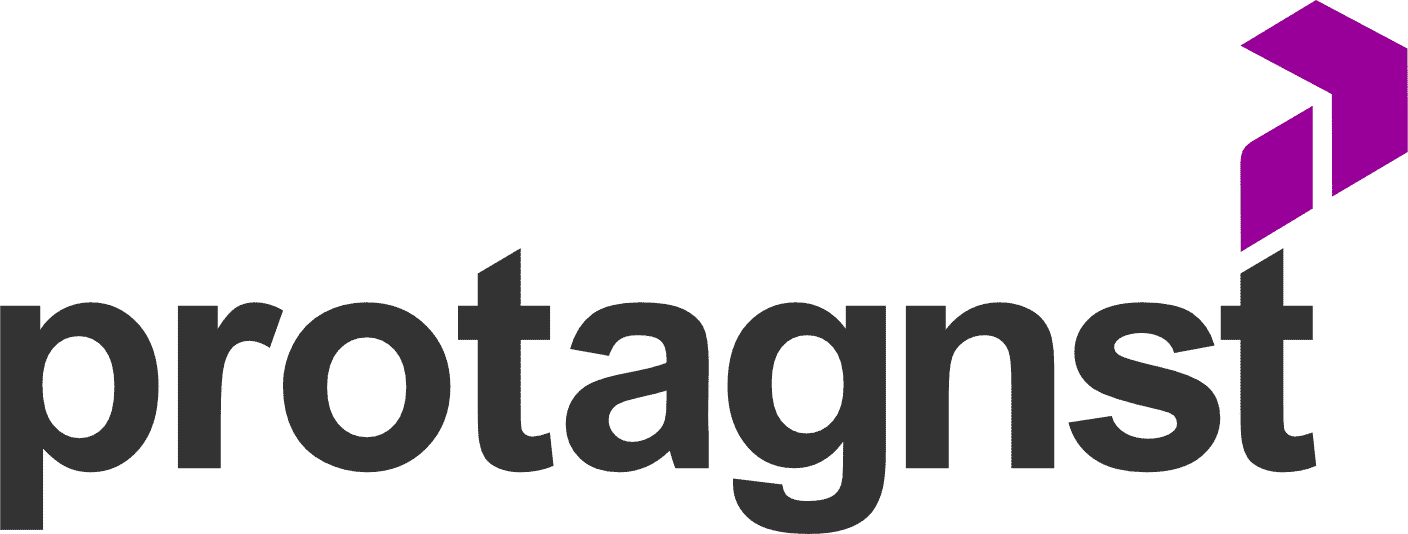The sales cycle is a crucial aspect to consider in any business. After all, the time it takes to close a deal directly impacts revenue and cash flow. Therefore, having control over it is essential to ensure the financial health of your company and avoid unforeseen issues in strategic planning.
In this article, we’ll break down the sales cycle. We’ll show its stages, how to calculate it, and the importance of reducing its duration. More than that, we’ll also show how to shorten it and, as a bonus, provide a free planner for you to create your own.
Although it has similar characteristics, each company has its own sales cycle. In general, the cycle is longer in corporate businesses compared to retail sales. But it’s always possible to optimize it with some strategies. And when you achieve this, there’s a significant increase in profitability.
In the business world, the sales journey is an intricate sales cycle that requires strategy, technique, and empathy. It’s like a dance where every step, every move, every glance counts to win over the client and close the deal. From the first contact to post-sales, it’s crucial to be attentive to the client’s needs, listen carefully, and offer personalized solutions.
The art of negotiation reveals itself in the ability to build solid relationships, understand client pain points, and present yourself not just as a seller but as a trusted partner.
The sales cycle is not just a simple commercial transaction, but a journey of discoveries, challenges, and opportunities. Each stage of this process demands technique and strategy, from prospecting to closing the contract. The secret lies in understanding that the sale goes far beyond the product or service offered; it also involves building value, overcoming objections, and creating a lasting bond with the client.
Mapa do Conteúdo:
ToggleWhat is the Sales Cycle?
The sales cycle is the process that encompasses all the stages necessary to sell a product or service. It’s the (potential) customer journey, which begins at the first contact and goes all the way to post-sales.
By the way, ideally, the sales cycle never completely ends; this is achieved when we manage to retain the customer, which projects new future business.
The cycle is an important commercial indicator since it demonstrates the time needed to close a deal. By mastering it, your company has more control over revenue forecasting and cash flow, which allows for more precise management of your business.
As we’ll show later, sales cycles can be shorter or longer, depending on several factors. While it is often possible to shorten it, it’s important to consider from the outset that it is necessary to respect each of its stages.
For a good sales cycle to occur, it’s essential to study the profile of your customers, knowing their habits and the potential that your solution has for their problems.
Thus, we can say that, for the salesperson, the sales cycle functions as a kind of roadmap for business. It begins in the lead prospecting phase and, if it develops naturally, becomes a powerful means of closing good deals and retaining customers.
Discover the Importance of the Sales Cycle for Business Success
The sales cycle is a fundamental process within any business because it represents the journey a customer takes from initial contact to the completion of the purchase. It’s like a dance in which the salesperson and the customer move in sync, seeking to meet each other’s needs and desires.
During this journey, it’s essential that the salesperson be perceptive and always attentive to the nuances of the negotiation, adapting their strategies as the stages progress. Each interaction is an opportunity to strengthen the relationship with the customer and demonstrate the value of the product or service offered.
Effective management of the sales cycle allows the company to identify areas for improvement, adjusting its approaches and processes to maximize the chances of conversion. Moreover, it helps to build a solid base of loyal customers who not only buy but also recommend the company to other potential buyers.
Therefore, understanding and valuing the sales cycle is essential for business success, as it represents the essence of the interaction between the company and its customers. It’s through this process that needs are met, relationships are built, and businesses thrive. A well-executed sales cycle is like a harmonious symphony, where all the elements come together to create a memorable and satisfying experience for both parties.
How to Calculate the Sales Cycle?
Calculating how long your company’s sales cycle lasts is relatively simple. However, you must consider all the stages involved and the duration within a given period. With the data in hand, just do a simple arithmetic calculation.
First, choose a period—which varies depending on the type of business. Complex sales, for example, take much longer than simple sales. But let’s suppose your company made 10 sales last month, and each one took the following time from prospecting to closing the deal:
- SALE A – 8 days
- B – 11 days
- C – 9 days
- D – 15 days
- E – 13 days
- F – 8 days
- G – 9 days
- H – 11 days
- I – 10 days
- J – 14 days
With this data, add up the total number of days required and divide by 10, which was the total number of sales. In our example, we have 108/10 = 10.8 days.
This means that your company has an average cycle of approximately one sale every 11 days.
Based on this number, your company’s manager can project each month’s revenue and adjust the budget for the next.
If, at the end of the first half of the month, they notice that sales are below what the average sales cycle indicates, they can launch a strategy to increase sales in the second half, such as reducing their profit margin.
On the other hand, if they are within or above expectations, they can work on a business expansion project for the following month.

The Stages of the Sales Cycle
Although there are different ways of looking at a sales cycle, it is generally divided into seven stages: prospecting, qualification, offer, follow-up, negotiation, closing, and post-sales.
Prospecting
As you probably already know, client prospecting is the moment when we map the market to find business opportunities by approaching potential clients—leads.
Thus, good prospecting is based on a lot of research, market analysis, method, strategy, and interaction.
The sales cycle begins at this exact point. From the moment a professional, or a team of them, is established to scour the market for potential clients, their buying journey has already begun.
However, you know that in the business world things only become simple if they are well executed. Therefore, prospecting should be considered not just the search for a potential client, but also knowing how to present yourself as important to them.
It is important to keep in mind that this is not a task of luck, but of hard work. It is necessary to understand the economic context, define an area of operation, and act based on concrete data.
This is extremely important because it allows you to invest in leads more accurately, in greater numbers, and with the potential to represent lasting business, not just occasional ones.
If you need help, you can turn to a B2B client prospecting company like Protagnst.
If you want to understand more about the area that works with prospecting, see the article on what pre-sales is.
Qualification
The next—and very important—step in a sales cycle is qualifying the leads that have been prospected.
Qualifying a lead is separating the contacts that have real interest in what you have to offer and making them advance in the sales cycle. This qualification is based on assertive questions capable of leading the lead to convert into a customer. If the return is not what was expected, it is better to discard it as a lead.
The idea behind this is to identify who is likely to actually be a customer for your company. After all, those who work with B2B sales cannot waste time—or money—with those who do not show signs of being willing to close a deal.
The calculation that establishes the sales cycle serves precisely to see your company’s business capacity within a given period. Unqualified leads can greatly increase this time, which can represent losses for your business.
Offer
Once prospecting has been done and it is known that the lead has the necessary qualifications, the next step is to present your solution to them. This is the time when you present your product or service in more detail.
There are several ways to do this, but the most modern and accepted way is the one that involves consultative selling. In it, you operate as a true consultant, listening to the potential client’s desires and working on an offer that meets all their expectations.
Therefore, it is essential that your proposal be exclusive. After all, each client has a different problem and a different capacity to solve it, whether due to the size of the company, its economic potential, or another reason.
Because of this, what you offer must meet the lead’s needs, and not the lead adapt to your product.
More than a product or service, offer clarity. However specific the niche you work with, you need to put aside technical terms and invest in simple and direct language.
As every good salesperson should do, focus on value, not price. After all, the concept of expensive or cheap is quite relative—everything depends on the return it can bring.
Follow-Up
Follow-up refers to monitoring the deal. You have already demonstrated your product or service to them, and you are about to actually start a negotiation.
However, you should not expect the potential client to contact you—after all, they may also be negotiating with other companies. Therefore, invest in ways to keep them interested in your solution. Send emails, make phone calls.
Negotiation
If the presentation and offer of the product are satisfactory, the moment in the sales cycle where negotiation occurs arrives.
It must be personalized and flexible. Be open to concessions because they may arise. Make your proposal and justify the numbers, but know how to listen and understand a possible counter-proposal.
It’s also crucial not to turn a price negotiation into a dispute. Reaching common ground will help close the sale securely and keep the doors open for future agreements.
Also, it is in this phase that sales objections can arise. High cost, the country’s economic situation, reservations about your company, cost-cutting, and others are arguments that may appear.
Be ready to counter each of them. Use arguments based on numbers, of course. Sales have long ceased to be based on guesswork.

Closing
Closing a sale is one of the most anticipated moments of the cycle, and if everything has been done well up to this point, it tends to be the easiest and most peaceful stage of the process.
If the salesperson has managed to reach this stage, it’s a clear sign that everything has been done following the normal course of a virtuous sales cycle. There has been prior research, conversations, adjustments, and possibly concessions. Prices and other matters inherent to a sale have also been negotiated. So, what remains now is to formalize.
Formalization is the most bureaucratic part of our sales cycle, and so it’s very important to make everything simple for the client. Send the documents, provide the best contacts in your company, check the details. Don’t leave any loose ends.
Furthermore, it’s crucial to deliver what was agreed upon. Ensure that you deliver the product or service within the deadline, establish schedules, and define who the post-sales contact will be.
Post-Sales
If the idea is to put an end to the sales cycle, it ends in post-sales. This is the moment when your company works on serving the now-client.
The idea behind post-sales is to guarantee the full satisfaction of those who did business with you, making their experience pleasant and thus building loyalty for future business.
This stage is part of the sales cycle because, after all, it also demands costs for you. Whether in staff training, travel, or other types of service, it is part of the customer journey.
The Sales Cycle: How Long Does It Last?
The sales cycle can vary depending on the type of product or service, the complexity of the sale, and the client profile. In B2B businesses, for example, the sales cycle is usually longer due to the need to build solid relationships and go through several stages before closing the sale.
In general, the sales cycle can be divided into stages such as prospecting, qualification, solution presentation, negotiation, and closing. In consultative sales, where the focus is on understanding customer needs and offering personalized solutions, the sales cycle tends to be longer.
There is no standard time for the duration of the sales cycle, but it is important to manage this process efficiently, seeking to identify bottlenecks and opportunities for improvement. Using process automation can help optimize stages, increasing the productivity of the sales team and accelerating the closing of sales.
In summary, the sales cycle is a dynamic process that varies according to the characteristics of the market and the target audience, and it’s essential to be aware of these particularities to achieve sales success and guarantee the profitability of the business.
B2B Sales Cycle
The B2B sales cycle deserves special attention. After all, because it involves larger values and, in general, a lower frequency of business than that seen in B2C sales, cycles tend to be longer.
This has some very important consequences. One is that revenue takes longer to enter the company’s coffers. If the business involves complex sales, for example, a single sale can represent all the expected revenue for many months, sometimes years.
Imagine, then, if a negotiation that has been dragging on for a long time suddenly falls apart. More than just a waste of time and a large volume of resources spent in vain, the risk of causing an impact, even an irreversible one, on the company’s cash flow is quite significant.
Short Sales Cycle vs. Long Sales Cycle
The names are self-explanatory and, by definition, fit into different types of businesses. In general, sales to the end consumer (B2C) have a short sales cycle, since the decision-making process is simpler. In corporate businesses, however, the stages of a sales cycle tend to be longer—and take longer.
This is because decisions usually involve more than one person. In addition to the financial manager’s approval, approval from technicians from different sectors is often required. This makes the cycle naturally longer, but it doesn’t mean you simply have to wait for it to happen. You need to act to reduce this time.

Why Reduce the Cycle?
In addition to ensuring important revenue for your company, reducing the sales cycle time brings at least three major benefits: it increases profitability, makes your business more competitive, and further motivates your sales team.
Increased Profitability
As we showed earlier, the sales cycle encompasses several stages, and each one depends on the performance of a significant number of people.
In companies with a well-structured sales department, the sales cycle requires the engagement and research time of the marketing team to research the market and prospect leads; invest in approaching and subsequently qualifying them; work on presenting the product or service to be sold; act firmly in the negotiation; and, if all goes well, close the sale.
This entire cycle, where the potential client goes through their buying journey through our sales funnel, has a cost. This is what we call Customer Acquisition Cost (CAC). So, the longer it takes to close the deal, the more will be spent on this acquisition.
On the other hand, if you manage to shorten the sales cycle, with the same end result, in addition to decreasing CAC, you gain time to pursue new closings. As you can see, there is both a direct increase in profitability, as well as other potential increases.
Also read about the 7 stages of the sales funnel here.
Increased Competitiveness
However innovative your product or service, your company must always consider the possibility that there is another company in the market capable of offering a solution.
Today’s market is highly competitive, and in B2B business environments, this is especially true. After all, companies need solutions to grow at all times, and they can’t wait.
Therefore, regardless of your business, consider that there may always be another company that your lead can turn to. And if your sales cycle takes too long, it’s quite possible that your transaction will be intercepted by them.
Furthermore, to give you an idea, a study by Exact Sales indicated that, on average, half of sales occur with the salesperson who made the first contact. This is why speed is so important.
Greater Motivation for the Sales Team
Short sales cycles represent greater quantities of potential business.
For example, if your sales cycle is 20 days, it means that your company can close three deals every two months. But if you reduce that cycle to 15 days, the negotiating capacity jumps to four sales in the same period.
This increase in productivity has the potential to motivate the sales team because it demonstrates in practice that their work is developing satisfactorily. Also, for salespeople who receive sales commissions, this represents a significant increase in their income, which always works as motivation.

How to Reduce the Sales Cycle?
Invest in Lead Qualification
One factor that greatly impacts the duration of the sales cycle is the quality of leads. Those that haven’t gone through a qualification process, or even those that haven’t been qualified as assertively as possible, extend the negotiation time. Often, they even turn into frustrated negotiations.
Make no mistake: you need to leave behind leads that don’t fit the qualification. And this is crucial when we talk about B2B leads because the potential loss they can bring is quite significant.
To achieve qualification, a lot of prior research, market analysis, and studies consistent with your company’s reality are needed.
For this to happen, it is essential that you have a well-defined Ideal Customer Profile (ICP). And, above all, that your sales team focuses on it.
The use of pre-sales professionals, such as a Sales Development Representative (SDR) or a Business Development Representative (BDR), is another effective way to ensure leads are as qualified as possible.
This is especially important if your company works with complex sales and/or deals with a very high average ticket. After all, in both cases, negotiations tend to take longer than usual, which requires greater investment in technical and negotiation visits. And, as we have already mentioned, this increases costs.
In addition, negotiations with highly qualified—”hot,” in sales jargon—leads also have an impact on future negotiations.
Whenever you negotiate with clients that perfectly fit the ideal customer profile, the success rate of agreements is higher—as is their chance of satisfaction.
And, ultimately, satisfied customers are much more likely to do business with you again. In this case, without requiring the entire sales cycle that was needed the first time.
Nurture Leads
Another point that helps decrease the duration of the sales cycle is nurturing leads that did not pass an initial qualification process.
While leads that did not pass qualification should be discarded initially, they tend to represent future business.
It may seem paradoxical, but let us explain.
When you invest in inbound marketing strategies, the chance of receiving cold leads is quite high. Several studies have already shown that, in general, 90% of website visitors arrived there by chance, through simple searches.
This means that this group does not come to the company’s website because they intend to buy, but because some kind of search led them there.
On the other hand, we have to think: if the search this prospect made sent them to that site, it means they have some point of interest in that type of business.
And this is precisely where another, much more promising statistic comes in: seven out of ten visitors are potential leads. The point is that this contingent can become clients for your company just as easily as for your competition.
This is precisely why it’s important to nurture them.
If the initial filter of your marketing or pre-sales team reached a certain prospect, it means they have some interesting characteristics. Thus, even if, initially, negotiations should only proceed with demonstrably hot leads, the marketing team needs to invest in nurturing the others in parallel.
This will ensure that, in the future, you have a larger lead base—and, therefore, a less time-consuming sales cycle.
However, you need to have clear criteria for nurturing this group. Those that are clearly cold should be discarded. The “lukewarm” ones deserve your attention. So, carefully check the reasons that made that lead discardable in the first place.
Seasonality, a bad economic climate, or their lack of awareness of a problem to be solved indicate that it is possible to resume contact in the future.
Don’t Waste Time: Make Contact as Soon as Possible
We’ve already mentioned that, in general, up to half of customers do business for the first time with the company that contacted them first.
This is very common in B2C businesses. If you’re over 40, for example, you’ll certainly remember a very common practice until the 1990s, when salespeople would go door-to-door offering their products—usually books, encyclopedias, or children’s kits.
Back then, the salesperson’s work was even more arduous because they didn’t usually do the prior research that we do today.
While we now insist on the need to analyze the market and invest only in qualified leads, back then, those who negotiated went door-to-door without knowing what lay ahead. Thus, it wasn’t uncommon for the children’s kit salesperson to go through 100 houses that didn’t even have children.
On the other hand, in homes where there was their ideal client profile, the chance of closing a deal was quite high. After all, what was the probability of that family receiving another kit salesperson in the near future?
Today’s reality is quite different, but in one respect it resembles that time. After all, now good salespeople know exactly which doors to knock on—whether by cold calling or another approach method. The point is that, unlike back then, the chance of more than one company reaching the lead is quite high.
Therefore, whenever your marketing or pre-sales team identifies a lead, contact them as soon as possible.
Monitor the Sales Cycle
Another very efficient way to decrease the duration of the sales cycle is to constantly monitor it.
Evaluate how each stage of your sales funnel is developing. The time spent on prospecting, on product presentation, and on negotiations. Have full control over your metrics and conversion rate.
Bad numbers—or lower than expected—need your attention.
Leads that spend a lot of time in the presentation stage may indicate that the previous process, prospecting and qualification, needs improvement. Abandonment in the final stretch of the funnel may warrant a review of pricing strategies or greater investment in consultative sales.

How to Create a Sales Cycle?
Now that you know the stages of a sales cycle, let’s help you create one for your company. We’ve prepared a very efficient model that you can download for free.
With our guide, you’ll see that creating a personalized sales cycle is not one of the most difficult tasks. However, you’ll need to keep in mind that it’s not a simple formula: there’s someone on the other end of the table who will make the decision to do business with you or not.
Decision-Making Process vs. Sales Cycle
The decision to buy or not usually goes through six stages. They are:
- Awareness of need: another company will only do business with yours if they know they have a pain point to solve. This need, of course, can come from them. But can you really afford to wait for potential clients to come to you every time? This is why market research and lead prospecting are so important, especially through investment in outbound marketing.
- Desire to solve: when the lead discovers they have a problem, the next step is to show interest in solving it. The question is “how.” This is when a good salesperson will listen to what that client needs and begin to design a business option that best fits their needs.
- Consideration: the potential client already knows what they need, and the seller already knows they have the solution. But it’s not time to move forward with the deal yet. At this stage, you need to show that lead the value of your product. It’s time to demonstrate how your solution can best solve that problem.
- Purchase intent: here, the potential client has already decided to acquire a solution—but not necessarily yours. After all, they need to invest in something and know there are other players in the market besides you. So, it’s time for you to start showing what makes doing business with you more interesting. Price? Production capacity? More attractive post-sales service?
- Evaluation: the potential client is inclined to negotiate with you, but it doesn’t depend solely on that lead. In B2B business, it’s very common for a purchasing process to be scrutinized by different managers. At this point, it’s up to your company to maintain that lead’s interest. To do this, your team needs to be attentive and prepared to answer all questions that may arise and be quick to respond to objections.
- Purchase: if all goes well, the decision-making process ends with the purchase. Now it’s up to you to deliver exactly what you promised and be efficient in your post-sales work.
https://protagnst.com/ciclo-de-vendas/
Why is it Important to Understand the Sales Cycle in a Business Context?
Understanding the sales cycle is fundamental to business success, as it allows you to identify opportunities, plan actions, prospect clients, conduct negotiations, close sales, and retain customers strategically and efficiently. Understanding all stages of the sales cycle enables more effective management of the sales team, optimizing processes and increasing company results.
How to Identify the Stages of the Sales Cycle and Their Respective Activities?
To identify the stages of the sales cycle and their respective activities, it’s essential to keep in mind the following: the sales cycle can vary depending on the segment and the product/service offered, but it generally involves the stages of prospecting, qualification, presentation of the solution, negotiation, and closing.
In each of these stages, the activities to be performed include: market research and lead identification in prospecting, analysis of customer needs in qualification, preparation of personalized proposals in the presentation of the solution, discussion of commercial conditions in negotiation, and formalization of the sale in closing.
It is important to adapt these stages and activities according to the customer profile and the complexity of the sale, always seeking to add value and focus on building long-term relationships.
What are the Best Practices for Optimizing the Sales Cycle and Increasing Results?
Invest in training the sales team, use process automation technologies to optimize stages, understand customer needs and pain points to offer personalized solutions, maintain a good post-sales relationship to build customer loyalty, and constantly analyze results and adjust the strategy.
What is the Relationship between Sales Techniques and the Sales Cycle in a Business Context?
Sales techniques are fundamental to conducting the sales cycle effectively in a business context. Using appropriate techniques, the salesperson can identify customer needs, present solutions that meet these needs, negotiate more assertively, and close deals more successfully.
The sales cycle, in turn, is the process that the customer goes through from the first contact to the completion of the purchase. By applying sales techniques correctly at each stage of this cycle, it’s possible to increase the chances of conversion and ensure lasting relationships with customers.
Hire a Company that Offers the Best Sales Cycle
Want a short and efficient sales cycle? Protagnst is a consulting firm specializing in B2B sales. We work on lead generation, customer acquisition, and increased sales in business-to-business transactions.
Fill out the form below so we can create the best strategy for your business together.




